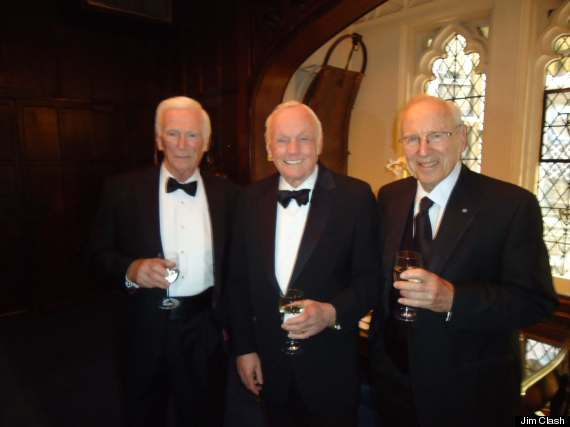As a longtime fellow of The Explorers Club, I sometimes forget what a storied institution I am part of. Recently, though, I was reminded squarely of what the Club really represents.
The century-old not-for-profit, headquartered in the historic Lowell Thomas Building in New York, has a list of members that reads like a who's-who in exploration: moonwalkers, Titanic wreck divers, Everest summiteers, even Nobel Laureates. But, like any organization, politics and day-to-day management issues sometimes dwarf the longer philosophical view.
Over the past year, for example, the Club experienced growing pains -- even, God forbid, public controversy. Articles in Outside magazine and in Page Six of the New York Post exposed some dirty laundry. Instead of being in the public eye as the center for world exploration, as we should be, we were written up more for squabbling in the boardroom.
But back to the story. Last month, I was invited to a private event at the Club where it was rumored that astronaut royalty -- Neil Armstrong, Gene Cernan and Jim Lovell -- would be in attendance. I had heard nothing official (I am also a Club director) so I was surprised and a bit suspicious. I sheepishly e-mailed Armstrong to see if, indeed, he may be coming. His response: "The rumor appears to be true. Look forward to seeing you."
So a few weeks ago, I attended a Club event that happened to be the 35th anniversary of The Lindbergh Foundation. There, I learned more about the foundation and why our Club was chosen as the venue for a celebration.
"In 1977, around the 50h anniversary of my grandfather's New York to Paris flight -- in this very building -- Neil Armstrong, Jimmy Doolittle and other friends of my grandparents asked, 'How do we carry on the legacy of Charles and Anne Morrow Lindbergh?' - that legacy being finding a balance between advancing technology and preservation of the environment," Erik Lindbergh, grandson of the late Charles, told me.
"Charles knew that the technology he used in airplanes had the potential to harm our quality of life." Erik went on to explain how the foundation -- through awards, grants and prizes -- strives to fulfill that mission.
Reeve Lindbergh, the foundation's Honorary Chair and youngest daughter of Charles, was also in attendance. When I asked what she remembered most about her late great father, her eyes lit up. "He was a very powerful force in my life," she said. "He had a strong personality. He came and went -- wasn't home all the time. But we had to be very good when he was home because he had a military kind of discipline."
"When he flew off again, we all relaxed, including my mother," Reeve added, laughing. "He was tremendous fun. He took us flying. I particularly loved that."
After dinner, it was time for the Apollo astronauts to recall Charles Lindbergh. Armstrong, Cernan (who won the foundation's "Spirit" award a few years ago) and Lovell, a former Lindbergh board member, touched upon their own encounters with the maverick flyer, some quite humorous.
Lovell, for example, remembered having lunch with Charles around the time of his Apollo flight. At the lunch, Lindbergh mentioned that he liked lots of fuel aboard his airplane -- in fact, that "Spirit of St. Louis" carried in excess of 350 gallons for its historic flight across the Atlantic. Lovell, not to be outdone, then informed Lindbergh that the Saturn V rocket carried over nine million gallons of fuel for the moon shots -- and burned it at the rate of 15 tons per second!
The three astronauts also exhibited a distinct sense of humor about their own unique places in history. When Cernan went up first to speak at the podium, he quipped: "This is unusual for me. Throughout my career I tended to go last, after Neil." (Cernan, of course, was the last man on the moon, Armstrong the first.) Armstrong, as well as the rest of the 70 or so in the audience, roared with laughter.
My main point here is this: Sometimes it is easy to lose focus with little things, egos, etc., like what happened at our Club recently. But given a 108-year history, with the likes of the late Sir Edmund Hillary as a past Honorary President -- and the great Trieste diver Don Walsh as current Honorary President -- the Club will always be home to the real legends of exploration. All that other stuff is background noise.
The Lindbergh night brought that notion back to me in spades.
Gene Cernan, Neil Armstrong and Jim Lovell at The Explorers Club. Photo by Jim Clash.
